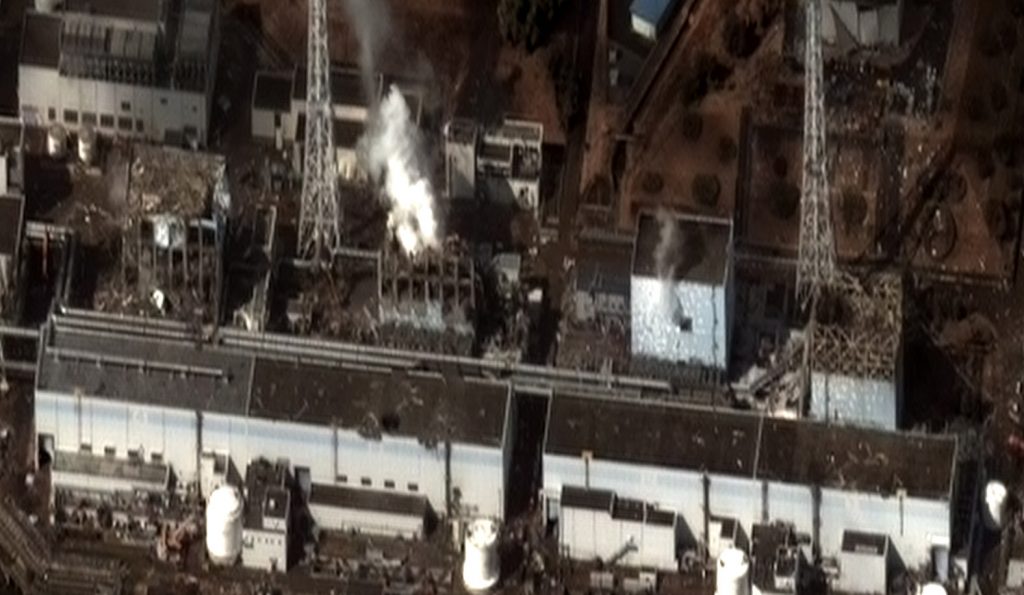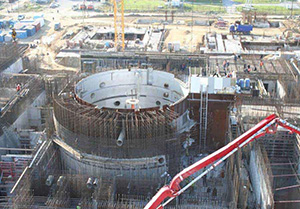One of the Manhattan Project’s many legacies is the development of peaceful nuclear reactors. Global nuclear electricity production has grown from under 100 terawatt-hours (one terawatt-hour can power 100,000 homes for one year) in the early 1970s to over 2000 TWh in recent years.
Manhattan Project
Efforts to harness the power of the atom ranged beyond weaponization. In 1946, a group of officers from the Naval Research Laboratory, under the command of Admiral Hyman Rickover, arrived at Oak Ridge. Their goal was to apply research on nuclear energy to propulsion in order to design a nuclear-powered navy.
Upon the completion of the Manhattan Project, General Leslie Groves addressed the Atomic Energy Commission (AEC), stating, “Five years ago, the idea of atomic power was only a dream. You have made that dream a reality. You have seized upon the most nebulous of ideas and translated them into actualities… With regard to peacetime applications, you have raised the curtain on vistas of a new world.” With the establishment of the AEC directly following the end of World War II, control of atomic energy was transferred from military to civilian hands.
International Atomic Energy Agency
In 1953 – several years following the end of the Manhattan Project and shortly after the onset of the Cold War – President Dwight D. Eisenhower delivered his “Atoms for Peace” speech to the United Nations General Assembly. In his address, he implored the international community to pursue peaceful uses of atomic energy. Consequently, the UN International Conference on the Peaceful Uses of Atomic Energy was held in Geneva, Switzerland two years later. The end product was the International Atomic Energy Agency (IAEA), established in 1957 with the goal of advancing the peaceful use of nuclear energy.
The IAEA prioritizes safety, security, and advancement of civilian nuclear technologies. Its objectives, as detailed by Article II of the Statute of the IAEA, are: “to accelerate and enlarge the contribution of atomic energy to peace, health and prosperity throughout the world. It shall ensure, so far as it is able, that assistance provided by it or at its request or under its supervision or control is not used in such a way as to further any military purpose.” As such, the IAEA has been the chief actor in catalyzing the spread of atomic energy around the globe. Today, 162 states are IAEA members, thirty-one of which operate nuclear power stations.
An Uncertain Future
 Despite the momentum built up by the nuclear power industry over the last six decades, there remain many challenges to the advancement of nuclear power technology. The most pertinent among these is negative public perception. To many people, the concept of nuclear power is seen as perilous, due to the infamous meltdowns at Chernobyl, Three Mile Island, and most recently, the earthquake that damaged the Fukushima Daiichi Plant. It is important to note, however, that each of these incidents was the result of human error. According to Bulletin of the Atomic Scientists, the Fukushima Daiichi disaster was caused by poor emergency procedures, and the low elevation at which the plant was built. Similarly, personnel at Three Mile Island had not adequately prepared for a radiation emergency. Lastly, at Chernobyl, a crucial design flaw constituted a lack of contingency in case of emergency.
Despite the momentum built up by the nuclear power industry over the last six decades, there remain many challenges to the advancement of nuclear power technology. The most pertinent among these is negative public perception. To many people, the concept of nuclear power is seen as perilous, due to the infamous meltdowns at Chernobyl, Three Mile Island, and most recently, the earthquake that damaged the Fukushima Daiichi Plant. It is important to note, however, that each of these incidents was the result of human error. According to Bulletin of the Atomic Scientists, the Fukushima Daiichi disaster was caused by poor emergency procedures, and the low elevation at which the plant was built. Similarly, personnel at Three Mile Island had not adequately prepared for a radiation emergency. Lastly, at Chernobyl, a crucial design flaw constituted a lack of contingency in case of emergency.
Proponents of nuclear power further argue that fears surrounding atomic energy are irrational when contrasting the dangers of nuclear power with those of burning fossil fuels or using other alternatives. Per TWh produced, nuclear power production results in many fewer deaths than electricity production employing coal, natural gas, or oil. Regardless, as long as the thought of nuclear power instills fear, the spread of peaceful applications of nuclear energy will be slowed.
Nuclear Power by Region

In the United States, total electrical generation by nuclear power has peaked at roughly 800 TWh, or about 19% of net power generation. Ninety-nine commercial reactors are currently in operation. Following the accident at Three Mile Island, construction of new nuclear reactors was sharply diminished. Despite this incident, output continued to increase due to development of maintenance strategies which boosted efficiency. As of today, however, there are only five reactors under construction.
In Europe, prospects for nuclear power seem positive. France leads the world in percent of domestic electricity supplied by nuclear reactors – a figure that stands at over 70%. Several Eastern European states, including Turkey, Bulgaria, the Czech Republic, and Slovakia, among others, have firm plans to construct nuclear power plants. The Baltic States have formed a joint project with each other to further efforts. Several others, including the United Kingdom, have established long-term plans to bolster their nuclear energy output.
In Russia, the world’s largest fast breeder and a number of world-class light water reactors are operating with the goal of increasing capacity by 25% by 2020. In addition to its aim of increasing energy exports, Russia is currently involved with many nuclear power projects abroad.
In East Asia, China is constructing twenty-eight new reactors in addition to the twenty it already has. Its research and development efforts are unmatched, giving China a competitive edge in technology exports. South Korea is also putting a strong focus on reactor design research and development. Japan, on the other hand, shut down all of its reactors following the incident at Fukushima, two of which have since been restarted. More restarts are underway.
In South Asia, Pakistan and Bangladesh are in the process of building nuclear reactors, the former with help from the Chinese, and the latter with assistance from the Russians. India currently operates twenty reactors.
In South America, both Argentina and Brazil boast nuclear reactors, while Chile has intentions to follow suit.
In the Middle East, the United Arab Emirates is working with several international firms to build four reactors. Construction on the first two was started in 2012 and 2013. Iran formally opened the Bushehr Plant, containing its first operational unit, in late 2011.
In Africa, both South Africa, Nigeria, and Egypt are seeking to construct nuclear power plants. The former has already established several, while Nigeria is in the early stages of commitment, and Egypt has only voiced an interest.





